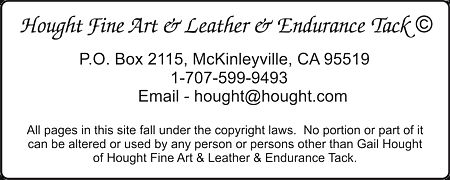|
4/20/04
Prepare to Prepare
The black silhouette of a hill on the horizon
was surrounded by deep oranges, yellows and blues on the underside
of the clouds; the top side of the clouds were black. It was
the second sunrise of our trip through Northern California, Eastern
Oregon and into Idaho.
I had been struggling with the topic, Prepare
to Prepare, for a couple of days. It’s amazing how highway
miles are similar to wet saddle blankets on a horse. It took
me about 350 miles before the pieces of my puzzle began to fall
into place.
A friend, Worwick Schiller, from Gilroy,
California, uses natural horsemanship to train reining horses.
He shared the following analogy with me of two horses feeding
in the same pen.
Horse #1 is quietly eating his own hay
when #2 begins approaching #1.
Number 1 rolls his eyes, #2 keeps coming.
Horse #1 roles his eyes and pins his ears, #2 keeps coming.
Horse #1 roles his eyes, pins his ears and shows his teeth, #2
keeps coming.
Finally, #1 rolls his eyes, pins his ears, shows his teeth and
kicks #2.
Over time #2 will pay attention to the first signal by horse
#1 and will immediately stop with the first signal. Horse #1
will be consistent but in reality he is saying, ‘get ready,
get ready, get ready, I told you so,’ the promise. This
is a classic example of “prepare to prepare.”
How can we apply this process to ourselves
and our horses? Let’s study the application of this sequence
to the cues for stop. The assumption is made that you have diligently
worked to supple your horse’s head, neck, shoulders, barrel
and hips.
To engage the ‘stop,’ you, the rider, slowly and steadily
take the slack out of the reins from start to finish. The sequence
is: slack, light contact, firm contact and finally direct pull
on the horse to a stop. Next, you wait until the horse stops,
backs a few steps and is soft in the face, then release. How
do we know how much volume to apply? The volume has slowly increased
until the horse finally hears the signal and reacts.
Compare the number of preparations given by Horse #1 to those
given by the rider. In both cases, it was ‘get ready, get
ready, get ready and follow through’ with the kick by Horse
#1 or the strong pull by the rider. Both were consistent and
fair to each horse.
I watched a young rider having trouble stopping her horse. The
horse was not supple. He was built heavily in front and bounced
on his front feet when she pulled for the stop. No preparation.
Someone suggested she push her feet forward as a brace before
she pulled on the horse to stop. The rider did it a couple of
times and on the third attempt he stopped better, not well, but
better. What happened? She had been preparing the horse without
knowing it. The horse was feeling her feet push forward and he
knew he was going to get pulled, so he began to stop to avoid
the uncomfortable pull that was coming. He’s a creature
of habit and likes to be comfortable.
The young rider was preparing her horse
even though she probably wasn’t thinking about the “get
ready” signal she was sending. More than likely she was
thinking about positioning herself for the stop.
The mini signals we send many times are
executed so automatically that we don’t know it. That’s
why we have to sit balanced, quietly and pay close attention
to every move WE make. Mini signals are picked up by the horse
and in turn consistent repetition makes them soft with undetectable
cues, supple, malleable and able to execute maneuvers smoothly.
Keep It Simple |

